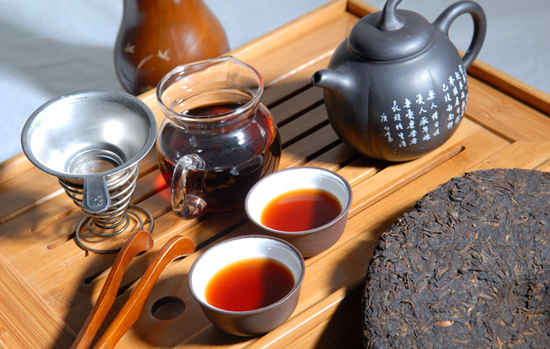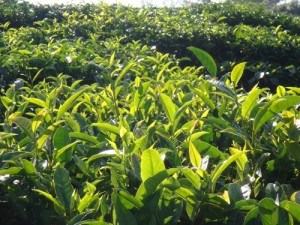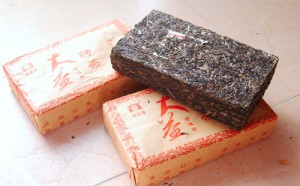Generally speaking, Pu’er Tea is a generic term that refers to tea in bulk or in its compressed form. This tea is made from the sun-greened raw tea that is grown in the six well-known tea-growing mountains near the Lancang River basin and that is then withered, rolled and dyed.
The first written record of Pu’er Tea appeared during the Eastern Han Dynasty (25-220), so the history of Pu’er Tea can be traced back at least 1,700 years.
What makes Pu’er Tea different from other types of tea, in terms of its unique taste, is the post-fermentation process. In the past, plain tea was initially sun-greened to make the primary tea, and then the primary tea was dried, steamed and moulded into different shapes of compressed tea. Usually this compressed tea had a high moisture content. Before these teacakes were delivered to the distribution centre, water had to be sprinkled onto the surface of the teacakes in order to prevent them from being crushed. Thus the preliminary cold fermentation process was completed whilst the tea was on the road. At the distribution centre, the finest quality tea was selected and then sent to Tibet. This long journey took several months and, whilst the tea was on the road once again, it completed the secondary slow cold fermentation process.
Nowadays, people have found a much faster way to perform these fermentation processes. The sun-greened primary tea is piled up, sprinkled with water and covered with linen for 24 hours. The fermentation process is aided by microorganisms that thrive in the hot and humid environment. Thanks to this process, the texture of the tea becomes milder, and the colour turns from green to yellow, to brownish red, and sometimes even to a dark red.
Pu’er tea can be made via the pilled fermentation process, called the “Cooked Tea” process, or it can be made following the natural fermentation process, called the “Raw Tea” process. The natural fermentation process usually takes at least 5 to 8 years but the aroma of the tea produced is stronger and the texture is milder than tea made by the pilled fermentation process.


